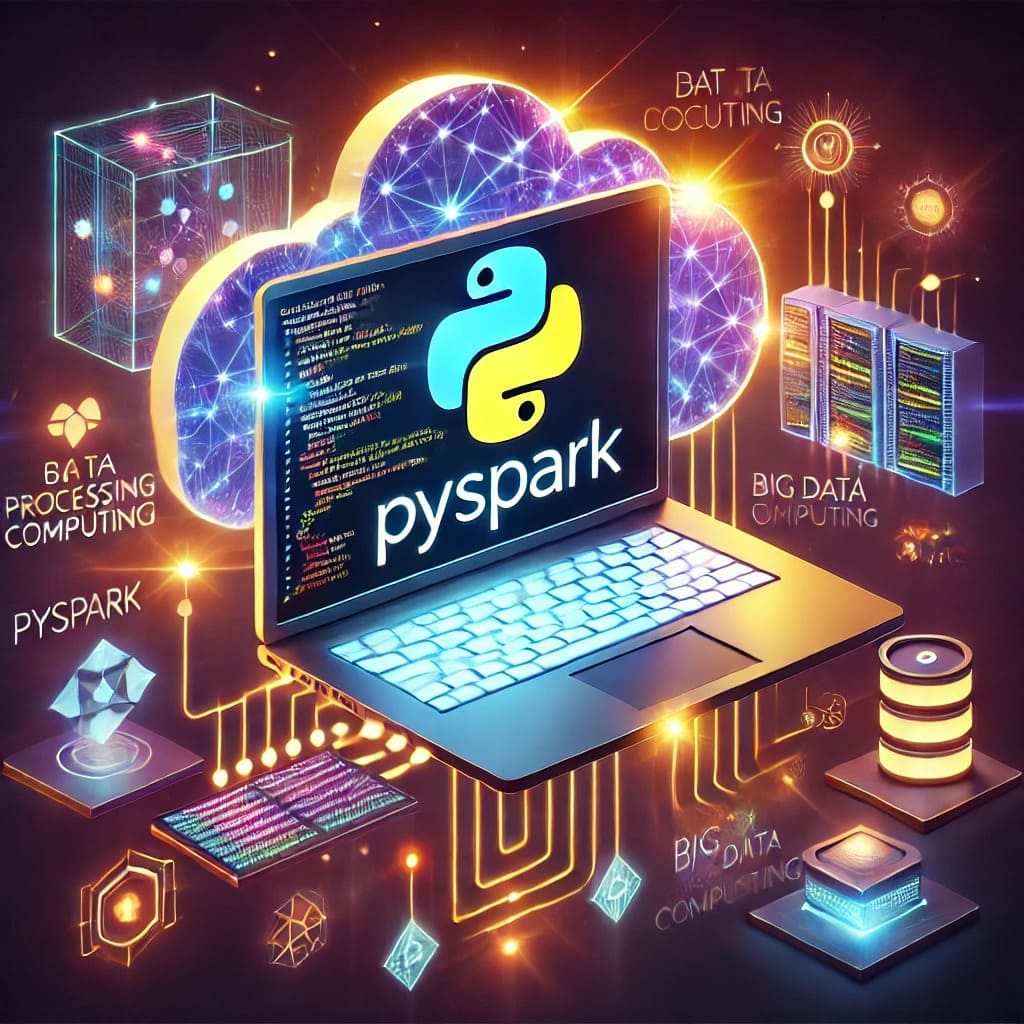A deep dive into PySpark fundamentals, offering a thorough exploration of distributed data processing using Apache Spark with Python. This comprehensive guide covers essential concepts from ground up, including DataFrame operations, RDD transformations, data manipulation techniques, and optimization strategies. Perfect for beginners starting their big data journey and intermediate developers looking to solidify their PySpark foundation.
Through practical examples and hands-on demonstrations, learn how to:
• Master core PySpark operations and syntax
• Understand distributed computing principles
• Handle large-scale data processing efficiently
• Implement real-world data transformation patterns
• Optimize Spark applications for better performance
• Build production-ready data pipelines
• Navigate common challenges and pitfalls
Designed for:
• Python developers transitioning to big data
• Data engineers exploring distributed systems
• Data scientists seeking scalable solutions
• Analytics professionals upgrading their toolkit
• Software engineers learning big data processing
With step-by-step tutorials and industry-tested best practices, this guide transforms complex PySpark concepts into digestible, practical knowledge. From basic DataFrame manipulations to advanced optimization techniques, master the essential skills needed for modern big data processing.
Key Focus Areas:
• Fundamental PySpark operations
• Data transformation techniques
• Performance optimization methods
• Real-world application patterns
• Best practices and common pitfalls
• Production deployment strategies
Whether you’re building ETL pipelines, processing large datasets, or developing data-intensive applications, this guide provides the foundational knowledge needed to succeed with PySpark in real-world scenarios.
1. What is PySpark vs Apache Spark?
"""
PySpark:
- Python API for Apache Spark
- Allows writing Spark applications in Python
- Uses Py4J for Python-to-JVM communication
Apache Spark:
- Core engine written in Scala
- Runs on JVM
- Provides distributed computing capabilities
Key Differences:
✅ PySpark is a Python wrapper around Spark
✅ Apache Spark is the core framework
✅ PySpark converts Python code to run on JVM
"""2. Key Components of PySpark
"""
1. SparkContext (sc):
- Main entry point
- Creates RDDs
- Manages cluster resources
2. SparkSession (spark):
- Modern entry point
- DataFrame and SQL operations
- Unified interface
3. Core Components:
- Spark Core (RDD)
- Spark SQL (DataFrame)
- MLlib (Machine Learning)
- GraphX (Graph Processing)
- Streaming
"""3. Creating SparkSession
# Basic creation
spark = SparkSession.builder \
.appName("MyApp") \
.getOrCreate()
# With configurations
spark_config = SparkSession.builder \
.appName("MyApp") \
.config("spark.executor.memory", "2g") \
.config("spark.executor.cores", "2") \
.getOrCreate()
4. RDD vs DataFrame
"""
RDD (Resilient Distributed Dataset):
✅ Low-level abstraction
✅ Unstructured data
✅ No schema enforcement
✅ More flexible but manual optimization
DataFrame:
✅ High-level abstraction
✅ Structured data with schema
✅ Optimized execution
✅ Similar to database tables
"""5. Creating RDD
# From list
data = [1, 2, 3, 4, 5]
rdd = spark.sparkContext.parallelize(data)
# From file
rdd_file = spark.sparkContext.textFile("path/to/file.txt")
# From DataFrame
df = spark.createDataFrame([(1,"a"), (2,"b")], ["num", "letter"])
rdd_from_df = df.rdd
